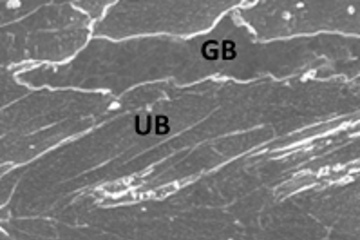All genres
1.
Journal Article
Sampling-free computation of finite temperature material properties in isochoric and isobaric ensembles using the mean-field anharmonic bond model. Physical Review B 109, 064108 (2024)
2.
Journal Article
Quantitative three-dimensional imaging of chemical short-range order via machine learning enhanced atom probe tomography. Nature Communications 14 (1), 7410 (2023)
3.
Journal Article
Approximating the impact of nuclear quantum effects on thermodynamic properties of crystalline solids by temperature remapping. Physical Review B 105 (18), 184111 (2022)
4.
Talk
Sampling-free thermodynamics in bulk crystalline metals from the mean-field anharmonic bond model. The 11th International Conference on Multiscale Materials Modeling, Prague, Czech Republic (2024)
5.
Thesis - Master
Fully anharmonic self-diffusion coefficients using the Finite-Temperature String method. Master, Ruhr-Universität Bochum (2019)











